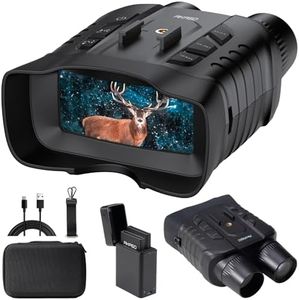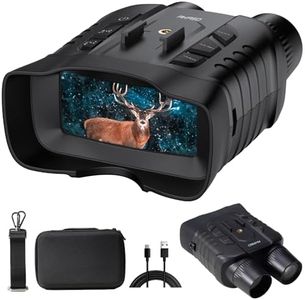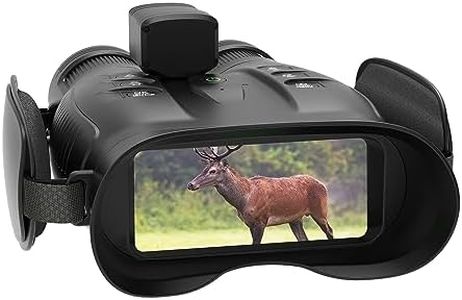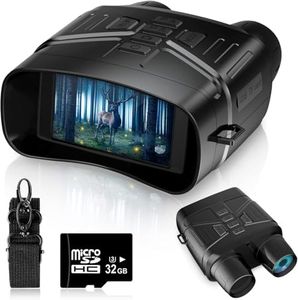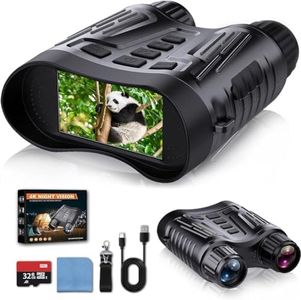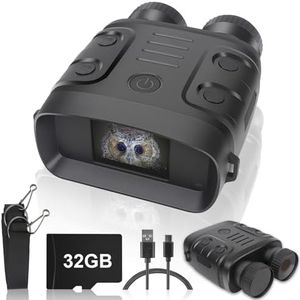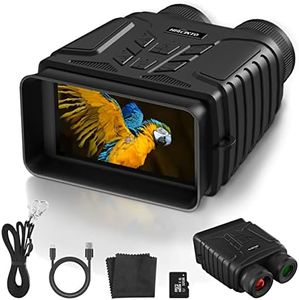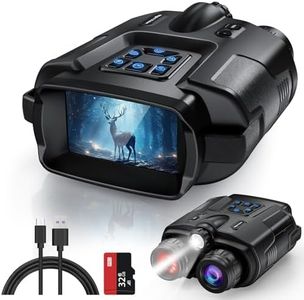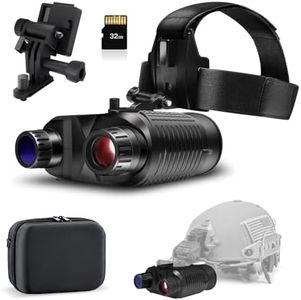We Use CookiesWe use cookies to enhance the security, performance,
functionality and for analytical and promotional activities. By continuing to browse this site you
are agreeing to our privacy policy
10 Best Night Vision Goggles
From leading brands and best sellers available on the web.Buying Guide for the Best Night Vision Goggles
Choosing night vision goggles can be a bit overwhelming if you're new to the technology. The best approach is to first think about how you plan to use them—whether for wildlife observation, security, navigation, or another activity. Different features affect how clearly you can see in the dark, how comfortable the goggles are to wear, and how long you can use them at a time. Understanding the most important specs will help you find a pair that suits your situation and meets your expectations.GenerationThe 'generation' of night vision refers to the technology used inside the goggles, which strongly affects image quality and sensitivity in low light. Generations are commonly labeled as Gen 1, Gen 2, Gen 3, and sometimes Gen 4. Gen 1 is the oldest, often less expensive, and suitable for casual or short-range use but might have fuzzier images and shorter viewing distances. Gen 2 improves clarity, brightness, and range, making it a good choice for more demanding situations like hiking or wildlife watching. Gen 3 and above offer superior clarity and perform best in very low light, often preferred by professionals or for security. You should choose a generation based on how clearly you need to see, how far you need to observe, and how often you’ll use the device.
ResolutionResolution in night vision goggles refers to how much detail you can see through the device, typically given in lines per millimeter (lp/mm). Higher resolution produces a clearer, sharper image. Lower resolution is fine for spotting larger objects or people, but higher resolution helps when you want to identify finer details, like distinguishing between animals or reading markings. Assess how important fine detail is for your uses—basic exploring needs less resolution than detailed surveillance or navigation.
RangeRange means the farthest distance at which you can see a subject clearly with the goggles. Shorter range is good for activities like camping or navigating a backyard, where your focus is nearby. Longer range models allow you to spot distant objects or people—useful for hunters, search and rescue, or security. Try to match the range of the goggles to the setting in which you typically expect to use them.
Field of ViewField of view is how wide an area you can see through the goggles without moving your head, usually measured in degrees. A wide field of view lets you see more of your surroundings at once, which is helpful for patrolling, searching, or navigating rough terrain. A narrower view can be useful for focusing on distant subjects but limits the scene you can observe at any time. Think about your activities and whether awareness of surroundings or focus on specific targets is more important.
Weight and ComfortSince night vision goggles are worn on your head or helmet, weight and ergonomic design are important for comfort, especially for longer use. Heavier goggles may cause neck strain or fatigue during extended periods, while lighter models are easier to wear for hiking or patrolling. If your activity involves lots of movement or long hours, prioritize lightweight designs and softer, adjustable straps.
Power Source & Battery LifeNight vision goggles are powered by batteries, and battery life determines how long you can use them before needing a recharge or replacement. Some models use standard batteries, while others have rechargeable packs. Longer battery life is best for overnight trips or long shifts, while occasional short use may not require lengthy battery performance. Consider how often and how long you need continuous operation, and pick a device with battery life that matches those needs.
Infrared (IR) IlluminatorAn IR illuminator is like a flashlight for your night vision goggles, providing extra invisible light to help you see in complete darkness. Some goggles have built-in IR, while others don’t, and the strength of the illuminator can vary. If you’ll use the goggles in environments without any ambient light (like caves or closed buildings), an IR illuminator is essential. For outdoor use where there is some starlight or moonlight, it may be less critical. Match this feature to how dark your typical environments will be.
